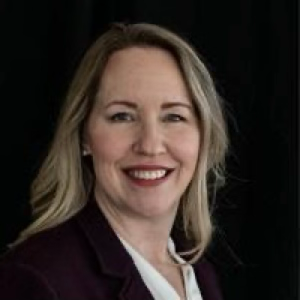Ask a Professor: The Fight for Full Practice Authority in Illinois
Find NP Schools
For the latest academic year, we have over 180 NP schools in our database and those that advertise with us are labeled “sponsor”. When you click on a sponsoring school or program, or fill out a form to request information from a sponsoring school, we may earn a commission. View our advertising disclosure for more details.
“NPs are the ones going to the front lines when needed. We fill those gaps when otherwise there would be no providers.”
Dr. Julie Koklys, DNP, Assistant Professor, Lewis University’s College of Nursing and Health Sciences
The US is headed towards a healthcare crunch, with Baby Boomers retiring faster than medical schools can graduate an adequate number of physicians. The need for qualified healthcare professionals is acute and increasing. Nurse practitioners (NPs) could play a prominent role in meeting that need.
“Nurse practitioners are provided with an education and a certification within their scope of practice and population focus that provides them with the knowledge and skills to provide safe, quality, and cost-effective care straight out of school,” says Dr. Julie Koklys, an assistant professor at Lewis University’s College of Nursing and Health Sciences.
“Like any profession, there’s a learning curve. But nurse practitioners have completed hundreds of hours of clinical experience from their education, both undergraduate and graduate, and from their nursing background, prior to ever stepping foot into their role as an NP.”
Despite Americans having ranked nursing as the most trusted profession for 23 years in a row, some state governments don’t trust NPs as much as they should. Several states, including Illinois, are classified as reduced practice environments: jurisdictions where NPs are not allowed to practice to the full extent of their education, licensure, training, and ability.
Meet the Expert: Dr. Julie Koklys, DNP, APRN-FPA, FNP-BC

Dr. Julie Koklys, DNP, APRN-FPA, FNP-BC, is an Associate Professor of Practice at Lewis University’s College of Nursing and Health Sciences. She received her MS in family health nursing and nursing education from the University of South Florida and her DNP from Lewis University.
Dr. Koklys is a practicing family nurse practitioner that currently serves on the Government Relations Committee for the Illinois Society for Advanced Practice Nursing (ISAPN) and the Governing Council for the Will County Community Health Center. She has published and presented research on APRNs’ perception of telehealth use. Her current research activities involve examining how APRNs perceive sharing clinical notes with patients.
Dr. Koklys was first interviewed for this feature in August 2020, and then for follow-ups in December 2023 and June 2025.
What is NP Full Practice Authority?
In states like Illinois, the law hasn’t fully caught up to the facts. Nurse practitioners are rigorously trained and highly competent, with studies showing that NPs can provide equal or better care than physicians. Research also suggests that they can provide equal or better patient outcomes at a lower cost, too. These benefits, however, are limited when full practice authority (FPA)—the ability of NPs to practice, unencumbered, to the full extent of their training—is not realized in their jurisdiction.
“In other states, you can graduate, and then you can practice independently,” Dr. Koklys says. “But, I use that term independently carefully: We know our resources. We know our referral sources. We know the colleagues that we can rely on if we have questions. We know as nurse practitioners when it’s time to seek out external sources. We don’t ever operate in a vacuum.”
The Challenges of NP Reduced Practice Laws in Illinois
A problem arises when legislation requires NPs to ask for help and confirmation when they don’t need it. What’s known as a “supervisory requirement” or “collaborative agreement” is the crux of one of the primary impediments to FPA. While they can vary in their precise wording from state to state, these restrictions generally include the stipulation that an NP needs the approval of a physician to perform certain tasks. In some states, the ability to practice as an NP depends upon such an agreement.
Largely a product of a bygone era, these supervisory requirements fail to consider the rigorous education and training that modern NPs undergo. They ultimately undermine the ability of NPs to fully meet the needs of the healthcare crunch. When an NP needs a physician signature or phone call to approve what they already know how to do, the care process is slowed down and cost savings can drop significantly.
When a supervising physician retires or relocates, the corresponding NP needs to halt a portion of their practice until a replacement can be found. The financial cost to an NP of maintaining a collaborative agreement can be a serious barrier to providing care in rural areas. In these and other cases, the legislative burden on the NP inevitably gets passed onto the patient.
“I worked for a clinic in the Chicagoland area that treated very specific conditions,” Dr. Koklys says. “Under my collaborative practice agreement, there were restrictions on the medications I could utilize for patients. For example, I couldn’t provide my patients with certain controlled migraine medications. So if I determined a diagnosis of migraine during the course of a visit and they would benefit from one of these controlled medications, I had to charge them for my visit, then send them to another provider, where they would likely be charged for a secondary visit. This was a barrier for both patients and providers.”
Supervisory requirements and collaborative agreements can be a significant nuisance in major metropolitan areas. In rural areas, they become a major problem. Illinois is home to some 76,000 farms that cover over 28 million acres and comprise nearly 80 percent of the state’s total land area. Data shows that NPs are far more likely than physicians to practice in rural areas. NPs providing care in these rural areas may be the closest healthcare provider within reachable distance for some patients; making them dependent upon the approval of a distant physician makes a hard job harder and sometimes impossible.
Moving Toward NP Full Practice Authority in Illinois
Like many other states, Illinois is inching itself towards full practice authority. In September 2017, an amendment to the Nurse Practice Act was signed into law, allowing some NPs to practice without entering into a written collaborative agreement with a physician.
To qualify, NPs need to first meet educational and training standards, including national certification, 4,000 hours of clinical experience in collaboration with a physician, and 250 hours of continuing education. In some ways, these requirements are redundant forms of the training and experience an NP has already accrued through the educational process.
In signing the law, which passed unanimously in the state’s two legislative chambers, the state’s then-governor, Bruce Rauner, cited the importance of reducing restrictions to practice for NPs and how it could increase the access, affordability, and quality of healthcare across the state. But, even in full effect, restrictions remain: NPs can only prescribe certain narcotics (such as opioids) when in consultation with a physician and reported under the state’s Prescription Monitoring Program.
“We made some headway in 2017,” says Dr. Koklys, who served the Government Relations Chair for the Illinois Society for Advanced Practice Nursing (ISAPN). “Until that point, Illinois NPs had to have a collaborative agreement with a physician indefinitely. So this was an initial step in the right direction. We still have some restrictions, and more work to do.”
Dr. Koklys and the ISAPN, along with other professional organizations like the American Association of Nurse Practitioners (AANP), are the spearheads for several advocacy issues within the profession. When the issue of providing telehealth was brought to the ISAPN board, the board took the issue to its lobbyists, who in turn took it to the state government in Springfield. The governor then put forth an emergency order stating that telehealth was a service that could be provided. The ISAPN took that information and disseminated it amongst the NP community. This sort of direct action, ultimately in service of better patient outcomes, is one of the main functions of professional organizations like the ISAPN.
“If you don’t have your finger on the pulse, then you don’t know what the problems are, and you don’t know how to help,” Dr. Koklys says. “Becoming a member of local, national, or specialty-based professional organizations is critical for NPs and NP students alike.”
Update 2025: Policy Action for Patient Benefit
Unfortunately, there have been relatively few changes to the practice landscape for NPs in Illinois over the last few years. Some bright spots exist: in 2023, laws were passed that removed the requirement for APRNs to consult with a physician when prescribing benzodiazepines if the prescription is for less than 120 days. That change may look small on paper, but it’s hugely important for NPs working in mental health, pain management, and even primary care.
The lack of progress on full practice authority has not precluded other important policy wins. In 2025, with the support of the ISAPN, Illinois passed HB 2688, a significant update to the state’s Nurse Practice Act. Sent to the governor on June 20 2025, the bill empowers Certified Nurse Midwives (CNMs) and improves access to maternal care. Once signed and put into full effect, CNMs will have more autonomy in home and birth-center settings, which were previously heavily restricted. The bill also allows CNMs to formally collaborate with other full practice authority APRNs instead of only physicians.
“We look at thousands of bills every year,” Dr. Koklys says. “But we really put our attention into getting this one passed, because maternal health is a big problem.”
Outside of government policy, NPs in Illinois are focused on integrating advancements in areas like telehealth into everyday practice. Relatively uncommon before the pandemic in 2020, telehealth is now ubiquitous — but what structures are in place to train and equip new NPs to use it? Dr. Koklys and other NPs in the state are looking at ways to integrate telehealth best practices, while also keeping one eye on the tech horizon, toward AI.
“When it comes to telehealth, we’ve adopted the means to get patients care where they don’t have to be physically present,” Dr. Koklys says. “And we can tap into those areas where providers aren’t otherwise available.”
Despite these advances, the major barrier NPs face in providing care in Illinois remains requiring NPs to enter into a collaborative agreement with a physician. The educational and experiential requirements (4,000 hours of clinical experience and 250 hours of continuing education) translate to roughly two years of full-time work. That extra barrier can lead to gaps in patient care, increased patient costs, and reduced patient access.
“There’s nothing research-based or evidence-based that says that these 4,000 supervised hours do anything different for us, or for the patients, or for our outcomes,” Dr. Koklys says. “But we do know we’re lacking in primary care providers. Eventually, there will come a time when, if Illinois wants more patients to have access to care, they’re going to have to get rid of some of these restrictions on NP practice.”

Matt Zbrog
WriterMatt Zbrog is a writer and researcher from Southern California, and he believes nurse practitioners (NP) are an indispensable component of America’s current and future healthcare workforce. Since 2018, he’s written extensively about the work and advocacy of NPs, with a particular focus on the rapid growth of specialization programs, residencies, fellowships, and professional organizations. As part of an ongoing series on state practice authority, he’s worked with NP leaders, educators, and advocates from across the country to elevate policy discussions that empower NPs. His articles have featured interviews with the leadership of the American Association of Nurse Practitioners (AANP), the National Association of Pediatric Nurse Practitioners (NAPNAP), and many other professional nursing associations.